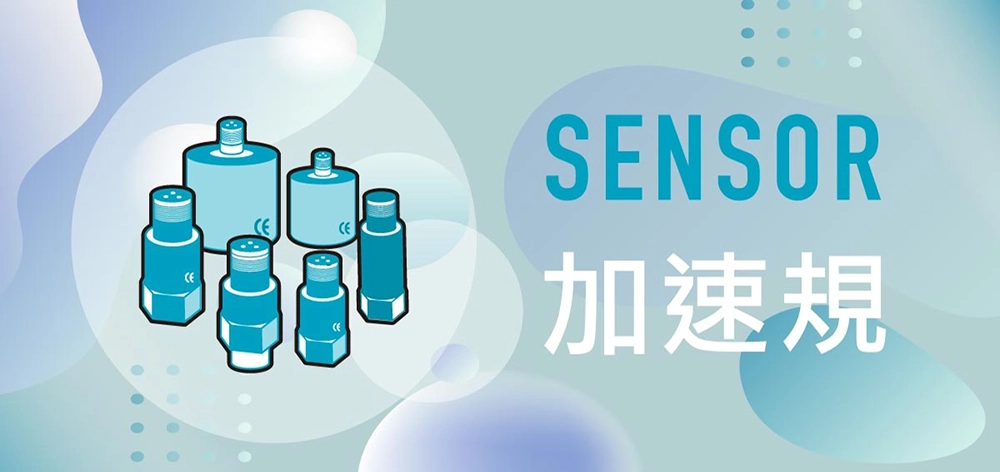How to Choose an Accelerometer?
FAQ|How to Choose an Accelerometer?
Vibration sensors are widely used in equipment monitoring, structural health diagnostics, and industrial automation.
However, selecting the right sensor requires more than just considering technical specifications; it also involves evaluating environmental constraints and equipment size.

Sensor Evaluation
Choosing the Right Vibration Sensor Based on Equipment Size
Importance of Selecting the Right Vibration Sensor
Vibration sensors capture vibration signals from equipment during operation, allowing data analysis and diagnostics.
However, incorrect selection may result in suboptimal performance or even interfere with the normal operation of the equipment.
Challenges in Sensor Selection:
1. Space constraints: Some devices have compact structures, leaving little room for large sensors.
2. Measurement accuracy requirements: While small sensors save space, they may have performance limitations.
3. Installation method: Improperly sized sensors may lead to installation difficulties or data inaccuracies.
1. Sensor Selection for Small Equipment
For small equipment, sensors should have the following characteristics:
・Compact size: Suitable for confined spaces.
・Lightweight design: Prevents excessive load on the device.
・High sensitivity: Ensures accurate measurements despite small size.
Recommended Examples:
・Piezoelectric micro-sensors: Ideal for vibration testing in electronics.
・MEMS sensors: Small, suitable for embedded applications, and capable of multi-axis vibration measurement.
2. Sensor Selection for Medium and Large Equipment
For medium and large equipment, sensor selection must balance measurement performance and structural adaptability:
・High durability: Withstands strong vibrations and shocks from large machines.
・Stable mounting: Ensures firm attachment to the equipment’s surface.
・Wide frequency response range: Supports various operating conditions.
Recommended Examples:
・ICP (Piezoelectric Charge Mode) Sensors: Ideal for high-precision measurements.
・Piezoresistive Sensors: Suitable for low-frequency vibration monitoring in large industrial machines.
Sensor Evaluation
Based on Environmental Conditions
1. Space Measurement and Model Compatibility
Before installation, it is necessary to accurately measure the available space of the equipment and consider possible interference between the sensor and other components.
When selecting an appropriate sensor, the following conditions should be met:
• Shape Compatibility: Choose compact sensors or specially designed models that fit irregular mounting surfaces.
• Installation Flexibility: Provide multiple mounting options (magnetic, bolt, adhesive) to accommodate different space constraints.
2. Vibration Frequency and Amplitude
Different sizes of sensors correspond to different frequency response ranges and sensitivity. It is recommended to select sensors based on the target vibration frequency and amplitude.
• High-Frequency Vibration: Choose piezoelectric sensors with fast response characteristics.
• Low-Frequency Vibration: Choose piezoresistive or high-sensitivity MEMS sensors.
3. Environmental Conditions
The performance of the sensor is also affected by external factors such as temperature, humidity, and vibration impact.
| Condition | Impact | Recommended Selection |
|---|---|---|
| High-Temperature Environment | Reduces sensor lifespan | High-temperature resistant piezoelectric sensors |
| Humid or Corrosive Environment | Damages internal structure | Waterproof and corrosion-resistant sensors with high IP rating |
| Strong Impact | Sensor components prone to damage | Shock-resistant designed sensors |
Principle of Accelerometer
Piezoelectric Sensor
An accelerometer consists of piezoelectric material and a mass block. When subjected to vibration, the mass block acts on the piezoelectric element, generating charge or voltage, which is used to determine acceleration values.
・Accelerometer Sensitivity: mV/g (g: acceleration)
・Voltage output per unit of acceleration input
・Unit: mV/g or mV/ms2
・Voltage Sensitivity = Output Voltage / Input Acceleration


Sensors
Overview of Wireless Sensor Types
| Temperature Sensor | Humidity Sensor | Water Detector | Motion Sensor | Tilt Sensor | Vibration Sensor |
| Voltage Sensor | AC Current Meter | Resistance Sensor | Voltage Detector | Ammeter (a) | Illuminance Sensor |
| Optical Sensor | Pressure Sensor | Magnetic Sensor | Motion Detector | Liquid Level Sensor |
Sensor Evaluation
Selection Steps
1. Define Application Requirements
・Determine the target measurement parameters (frequency, amplitude, direction) and choose the appropriate sensor for general bandwidth, high-frequency, or low-frequency measurements.
・Define the measurement range and accuracy requirements, selecting the optimal sensor weight to minimize mass effect on measurement accuracy.
・For multi-axis measurement needs, consider sensors that support multi-directional sensing.
2. Evaluate Equipment Space
・Assess the size and shape of the measurement space and list possible sensor installation positions.
・Ensure the sensor size does not interfere with other equipment functions.
・Evaluate the available measurement environment and select a sensor with the appropriate size.
3. Match Technical Specifications
・Refer to the sensor's technical datasheet to verify whether its size and performance meet the application requirements.
・For multifunctional sensors, consider options that support both single-axis and multi-axis measurements.
4. Environmental Conditions
・For extreme environments such as high temperature and high humidity, select specialized sensor designs.
・For chemical environments, choose explosion-proof or chemically resistant sensors.
5. Transmission Cables
・Choose transmission cables of different lengths to reduce measurement distance limitations.
・Select cable materials according to specific measurement conditions.
6. Mounting Methods
Depending on the measurement requirements, choose from different mounting accessories, such as magnetic, bolt-mounted, adhesive, wax-mounted, or environmental base options.


